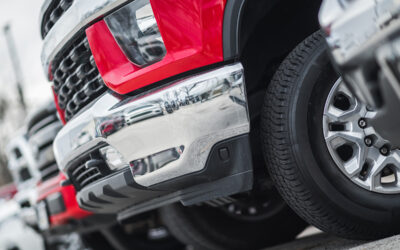New ELD Mandate Approaches
The new ELD (electronic logging devices) mandate is looming in the near future. Is your fleet ready?
What is the New ELD Mandate?
The Federal Motor Carrier Safety Administration (FMCSA) created the new ELD mandate which, in a nutshell, requires carriers and drivers who need to fill out records of duty status (RODS) to move to electronic logging devices entirely. The purpose of the new rule is to eliminate paper logs and records, which some drivers still utilize today.
There are three phases to the mandate:
Phase 1 – Awareness and Transition Phase
Phase 1 of the ELD rule, called the Awareness and Transition Phase, began on 2/16/16 and will last through the beginning of Phase 2 – 12/18/17. This was a two-year period where carriers and drivers should have been preparing to comply with the new rule and could voluntarily use ELDs. During this phase, they can still use paper logs, logging software, and AOBRDs (Automatic On Board Recording Devices), but are welcome to transition to ELDs that are self-certified and registered with FMCSA.
Phase 2 – Phased-In Compliance Phase
Phase 2, known as the Phased-In Compliance Phase, is a two-year period starting 12/18/17, lasting thru 12/16/19. We’re quickly approaching the beginning of this phase. Those who are subject to the mandate will no longer be able to use paper logs and logging software. They will, however, be able to use AOBRDS, and of course ELDs during this phase.
Phase 3 – Full Compliance Phase
Phase 3, called the Full Compliance Phase, is more than two years away. However, it’s never too early to start. Compliance with this phase will begin December 16, 2019. All subject drivers and carriers must use ELDs registered with FMCSA.
Pushback on the Rule
The new ELD rule did not come without resistance. According to Clarissa Hawes at Trucks.com, some independent truck drivers believe the electronic devices will be intrusive. Fourteen industry trade associations, including Owner-Operator Independent Drivers Association (OOIDA), have also adamantly pushed back. In a letter supporting the move to repeal and at the very least, delay the mandate, the 14 associations wrote “We remain adamant that the ELD mandate should be repealed.” It went on the say that their members would be negatively impacted.
Who Does this Mandate Affect?
As mentioned previously, the new mandate will affect carriers and drivers who are required to maintain RODS. This includes most anyone who drives a vehicle weighing over 10,000 lbs. (including weight of vehicle). This applies to commercial buses and trucks. Some exceptions to the rule, per the FMCSA, include the following:
- Drivers who operate under the short-haul exceptions may continue using timecards; they are not required to keep RODS and will not be required to use ELDs.
- Drivers who use paper RODS for not more than 8 days out of every 30-day period.
- Drivers who conduct drive-away-tow-away operations, in which the vehicle being driven is the commodity being delivered.
- Drivers of vehicles manufactured before 2000.
Cost to Be Compliant
As reported by RTS Carrier Services, the estimated cost to be compliant with the ELD mandate is between $165 and $832 a year, per commercial truck. For small companies, that expense can add up fast. The added financial burden will most likely cut into profits which could cut jobs.
The FMCSA, on the other hand, predicts the mandate will save the industry greater than $1 billion a year due to less paperwork and fewer accidents on the highway. They claim that ELDs could save roughly $809 each year per truck driver.
Penalties for Non-Compliance
The Commercial Vehicle Safety Alliance (CVSA), the group responsible for enforcing the new mandate, has been working with law enforcement across the country to ensure they are current with the new rules. If a driver is stopped for a roadside inspection after the December 18th deadline, and is found non-compliant, that driver will have violation points added to his or her FMCSA’s Compliance, Safety, Accountability (CSA) scoring program. The more points in the CSA program, the worse it is.
Additionally, these non-compliant drivers may be fined by the state enforcement agencies responsible for roadside inspections. How much are the fines? Well, it varies from state to state. The fine in Colorado is $67, whereas the fine in Delaware is $110. Missouri is among the highest fines for non-compliance, at $172.
Bundling ELD with Existing Telematics – A Great Idea
Many fleet managers are working with their existing telematics providers to become compliant with the upcoming mandate. It seems to be the best solution. Why? Instead of toggling between two different programs, fleet managers only need to look at a single platform. With an existing program that both managers and drivers are familiar with, the learning curve is cut down dramatically. To implement the new ELD software on most telematics programs, it’s simply a matter of activating those additional functions.
Summit Fleet Vehicles are Equipped
Summit Fleet trucks and vans are equipped with Telogis Fleet Management Software. Within Telogis software, there is a bundle specifically for the ELD mandate. It has gone through appropriate development and testing to meet the requirements by the FMCSA. If your organization is concerned about ELD, it is a seamless process through Summit Fleet’s vehicles.
To inquire how Summit Fleet can assist your organization, fill out a Quick Quote here and a regional representative will connect with you soon.
Sources:
https://www.fmcsa.dot.gov/hours-service/elds/faqs
https://www.fmcsa.dot.gov/hours-service/elds/implementation-timeline
https://www.trucks.com/2017/09/22/trucking-companies-prepare-eld-mandate/
https://www.rtscarrierservices.com/articles/what-you-need-to-know-eld-mandate
https://smallbiztrends.com/2017/09/what-is-the-eld-mandate.html
https://www.automotive-fleet.com/news/story/2017/11/survey-shows-more-than-half-of-small-fleets-not-yet-eld-compliant.aspx






